
UPDATES.
I’ll be doing a livestream tasting of Douro wines from Portugal this month, and also a few impromptu livestreams from Entre-Deux-Mers in Bordeaux, as well as from rural Tuscany. Will keep you informed.

My recent Forbes articles are here, and cover four Italian wine regions, visiting Florence in Italy post Covid-19 outbreak, the world’s first ever electric boat race championship, and the Tuscan island of Gorgona—where prisoners produce excellent wines.
Also, my recent Instagram posts are here, while livestream videos are here.
OVERVIEW.
The Greek island of Santorini is basically the remnants of what was once the rim of a volcanic cone. A huge crescent remains, and the interior of this ‘C’ shape faces westward—toward famed sunsets over the Aegean Sea.
Santorini also produces stellar wines, most of them whites from the Assyrtiko grape (as well as white grapes Athiri and Aidani), but also reds from Mavrotragano and Mandilaria grapes. Harsh southern winds and blazing sunshine forced vine growers to create unique methods for protecting vines, the most predominant known as ‘kouloura’ vine training.
Basically, vines are coiled and woven into circles, which allows leaves growing above them to provide sun protection, while grapes growing inside the circular vine walls are protected from blasting winds.
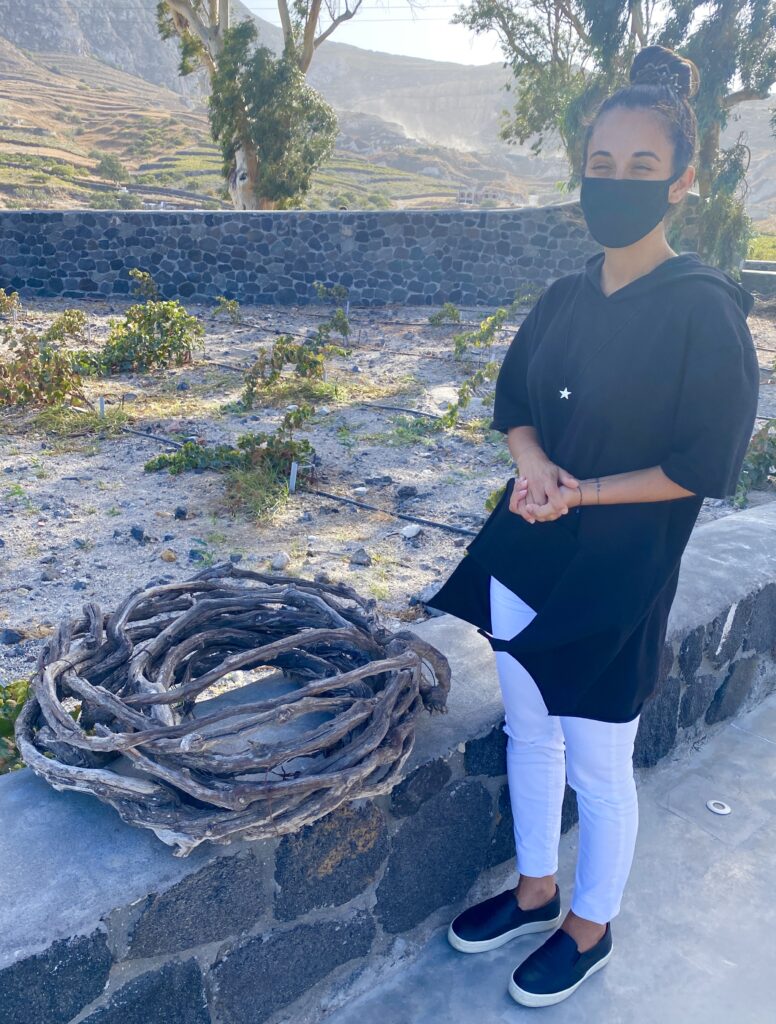
1. CHEF.
Chef Panagiotis Margaronis originally comes from the Greek island of Samos. He studied cooking in Athens for two years, then worked all over Greece as well as in Norway. He was fortunate in doing his internship on the Greek island of Chios, where they utilize traditional cooking methods that include collecting sea salt from rocks and making their own bread. All foods they prepared were made from scratch.
When Panagiotis later discovered some classmates had interned at larger hotels—where they cooked with frozen food—he thought, ‘I realized I was ahead.’
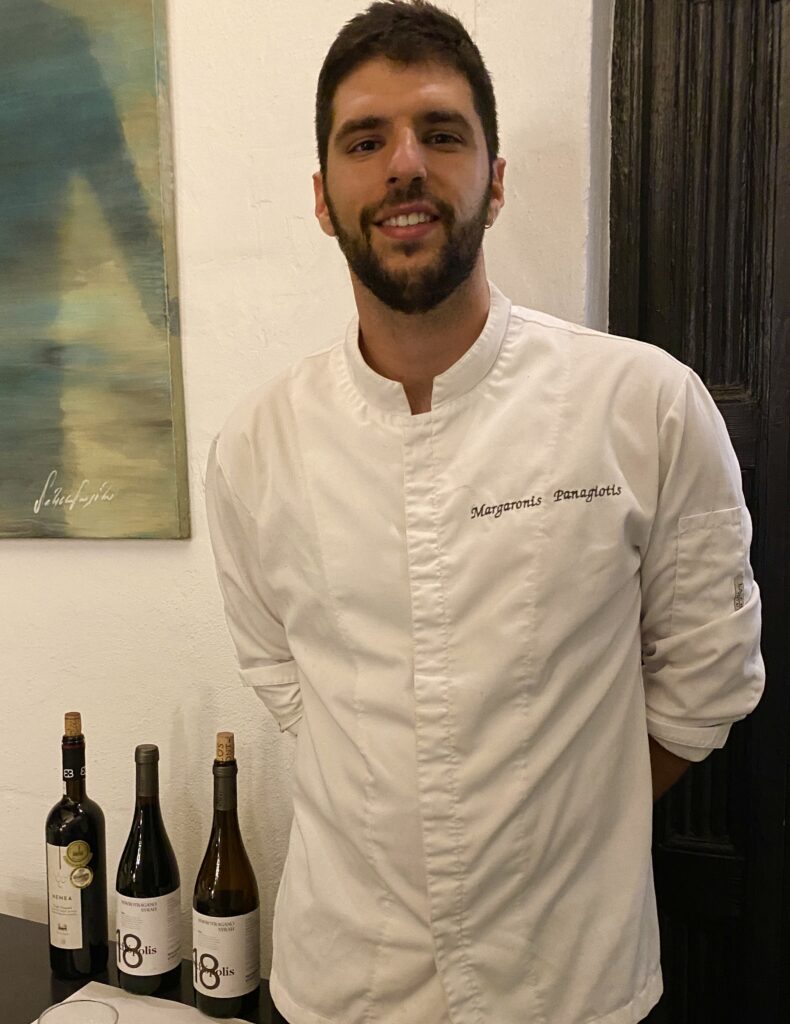
One day he and his girlfriend visited a restaurant on Santorini Island named Alisachni Art & Wine Gallery in the southern traditional village of Megalochori. The word Alisachni is a Greek term—describing sea foam splashing against shoreline rocks.
‘The food was not so good,’ he recalls. ‘So I said, why not?’ I offered to cook for them, and asked, ‘Can I come tomorrow?’
The owners agreed. Since then his cuisine (and the restaurant’s stellar wine list) have been a hit.
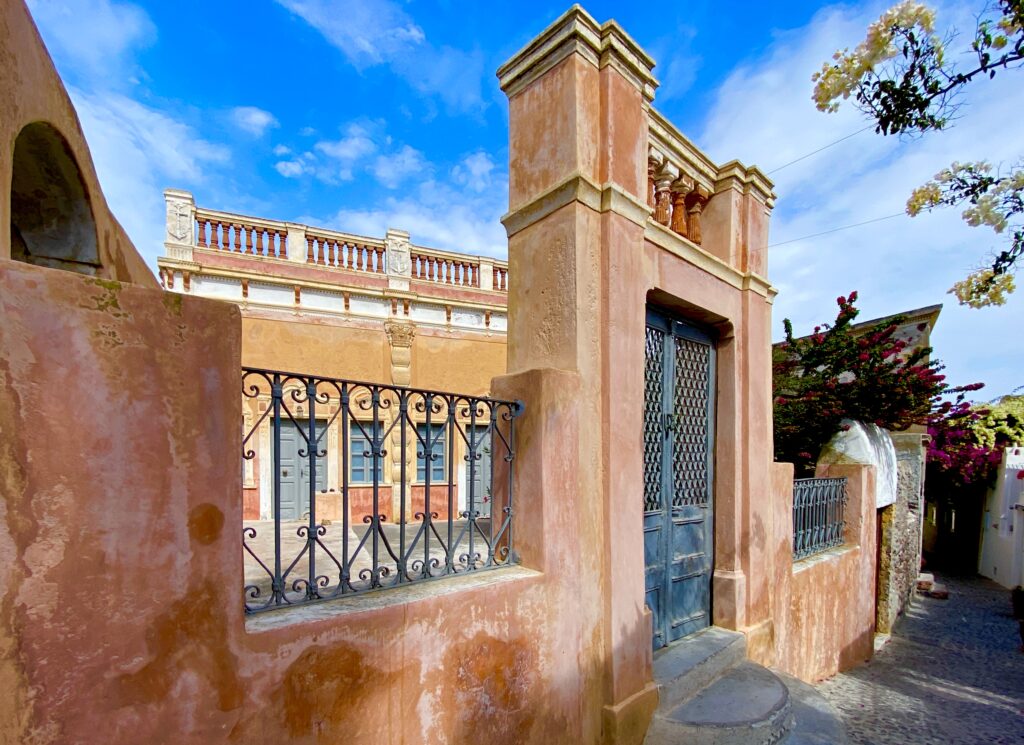
Oddly, I found the restaurant by wandering on foot from the hotel into winding alleys in the village. Along the way I saw a couple working on the terrace of the Symposion by La Ponta – Musical & Mythology Cultural Center. The located was closed, but while we bantered they recommended Alisachni, partially because the restaurant menu includes dozens of Santorini wines.
2. DISHES.
Appetizer: Greek traditional pie, filled with herbs and local greens (which change seasonally) such as spring onions. This was a fully, healthy and hearty appetizer.
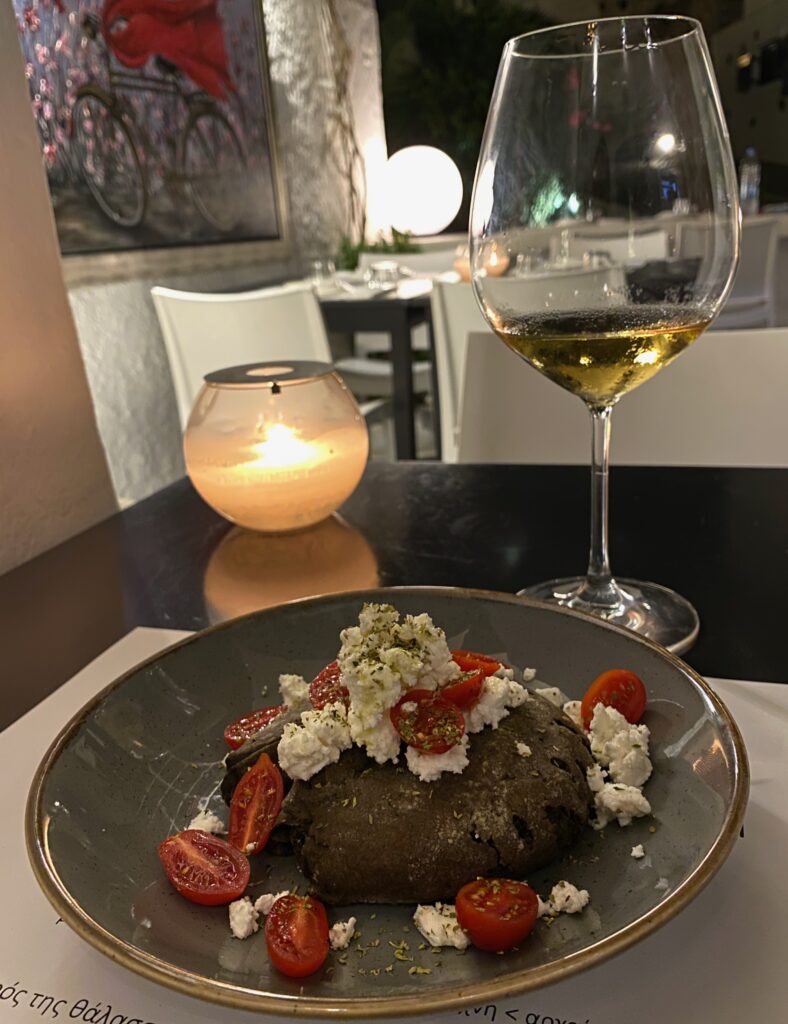
Main Course: Two are included, because I visited twice.
Prawns with ouzo, tarama fish roe and homemade bread.
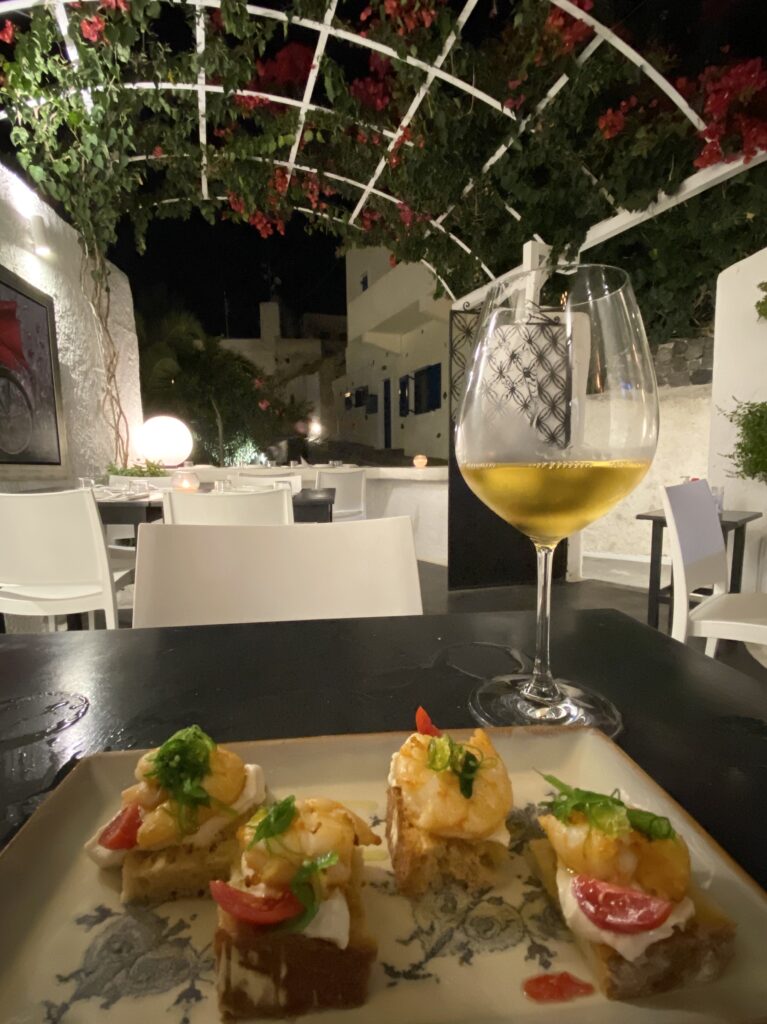
Also—Lamb slow cooked with rosemary and crispy fried potatoes.
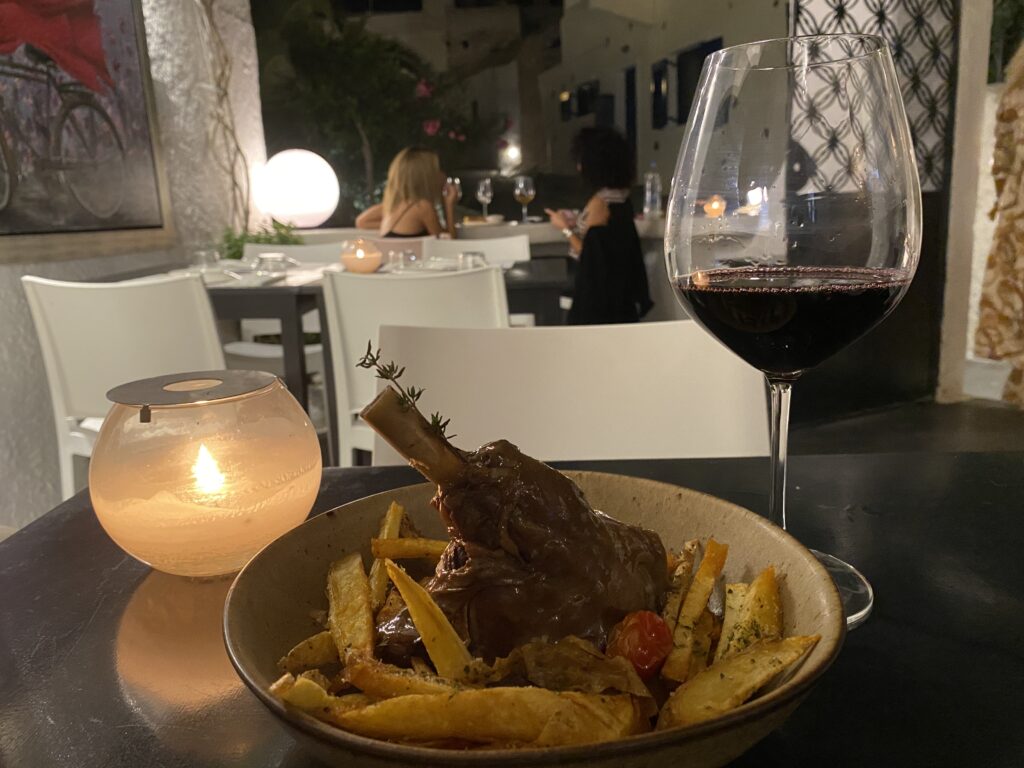
3. WINES.
The restaurant serves 35 Santorini wines by the bottle, and more than 15 by the glass.
For an appetizer I drank a ‘Santorini natural ferment’ white wine from the local Gavalas Winery. Made 100% from the Assyrtiko grape (with no aging in oak), this fresh and lively white includes tastes of grapefruit and pears.
I followed this with a 2017 Grand Reserve from Santo Winery—same grape but aged in oak for 12 months. Flavors include a wild herbaceous streak with a tangy aftertaste.
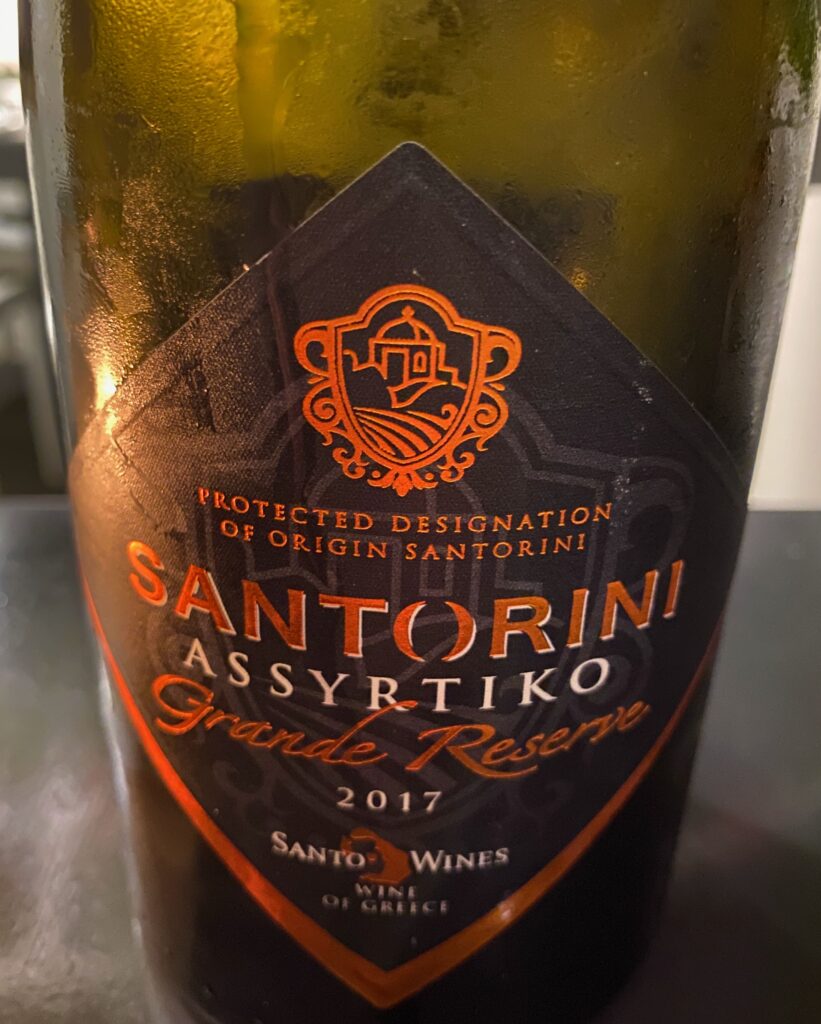
For the prawns, the owner recommended a 2017 Skitali from Hatzidakis Winery—made again from 100% Assyrtiko. The wine spends 12 months on lees in stainless steel and is bottled unfiltered. Aromas of fresh lime, marmalade and dill, and in the mouth an assertive but delicately bold taste that includes flavors of candied orange, candy cane and truffles. Beguiling and bewitching, and not for the tame.
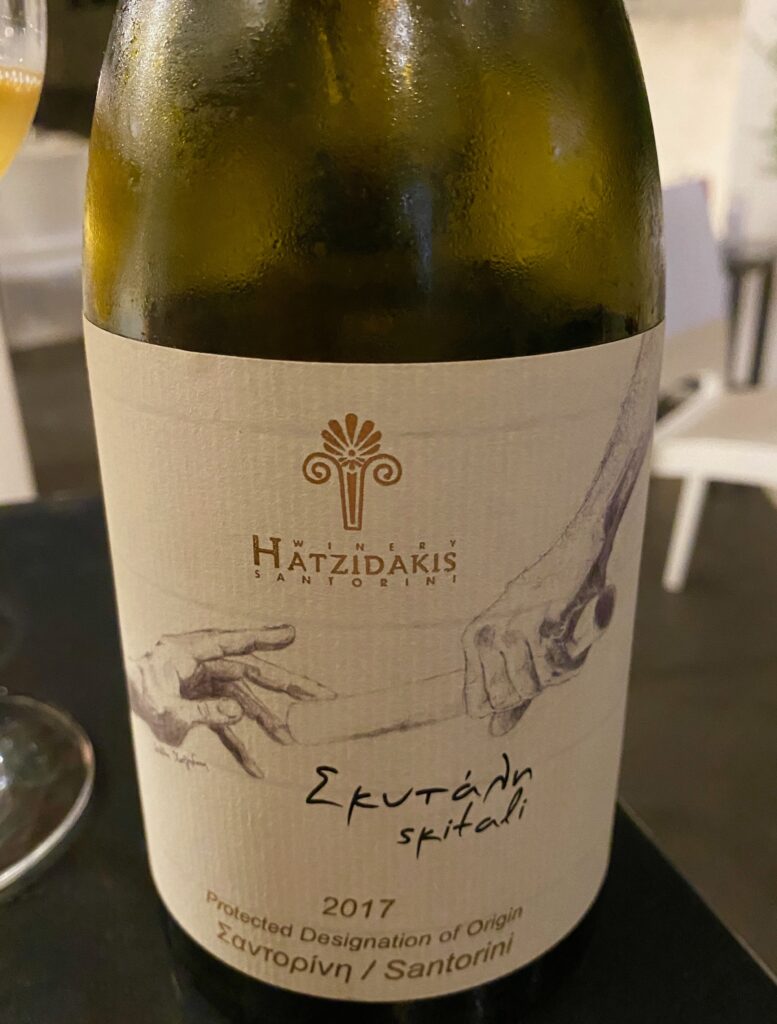
The children of late winemaker Haridimos Hatzidakis are named Stella, Antonis and Ariadne. They wrote on the back label a description of their own business sensibilities:
‘The moment you take the baton, you hold it with every ounce of strength that is left, trying to reach the finishing line with your head held up high … ‘
For the lamb, a red wine from Santo Wines, which was a Mavrotragano (the name of the grape). Aged 12 months in oak, this included layers of red fruit. Hefty but also suave.
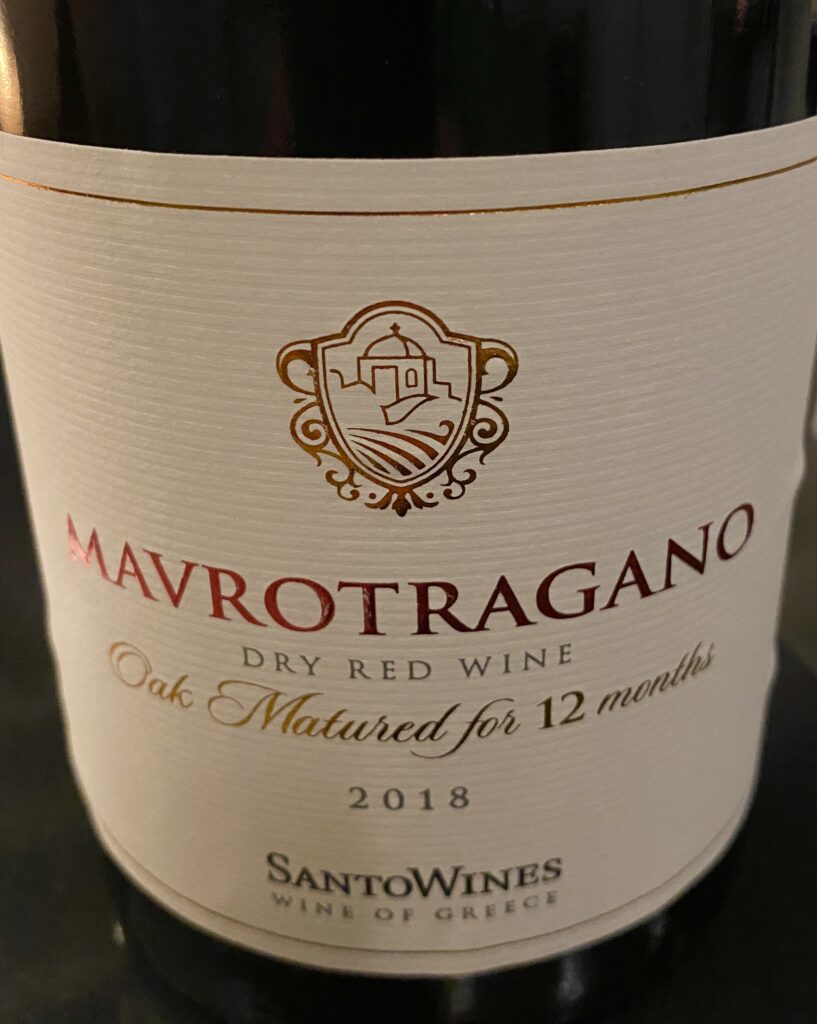
SCENE & INSIDER ANGLES.
- Santorini is gorgeous—visit now while tourists are few and cruise ships are absent. For accommodation, try to avoid the main city of Thira or the northern ‘scenic’ town of Oia. Instead, choose a southern village with fewer visitors and more open space—such as Magalachori.
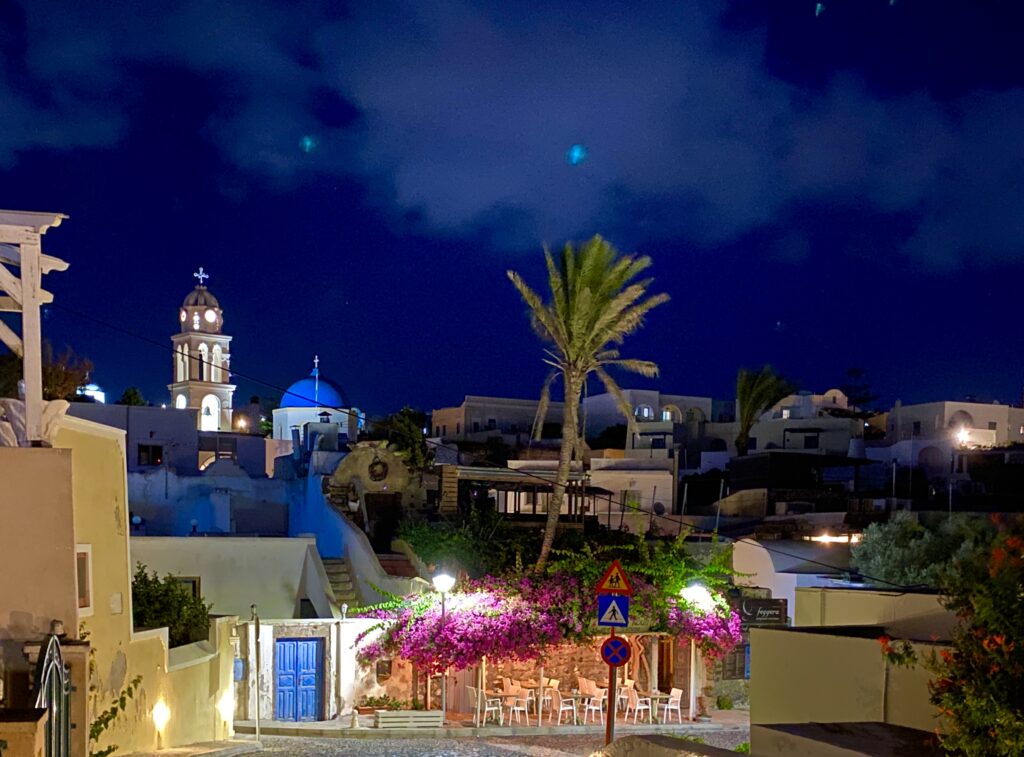
2. Rent a car. Prices are very reasonable. Visit wineries and ask to see their kouloura trained vines.
3. Sample local food, as well as white wines made from Assyrtiko grapes.
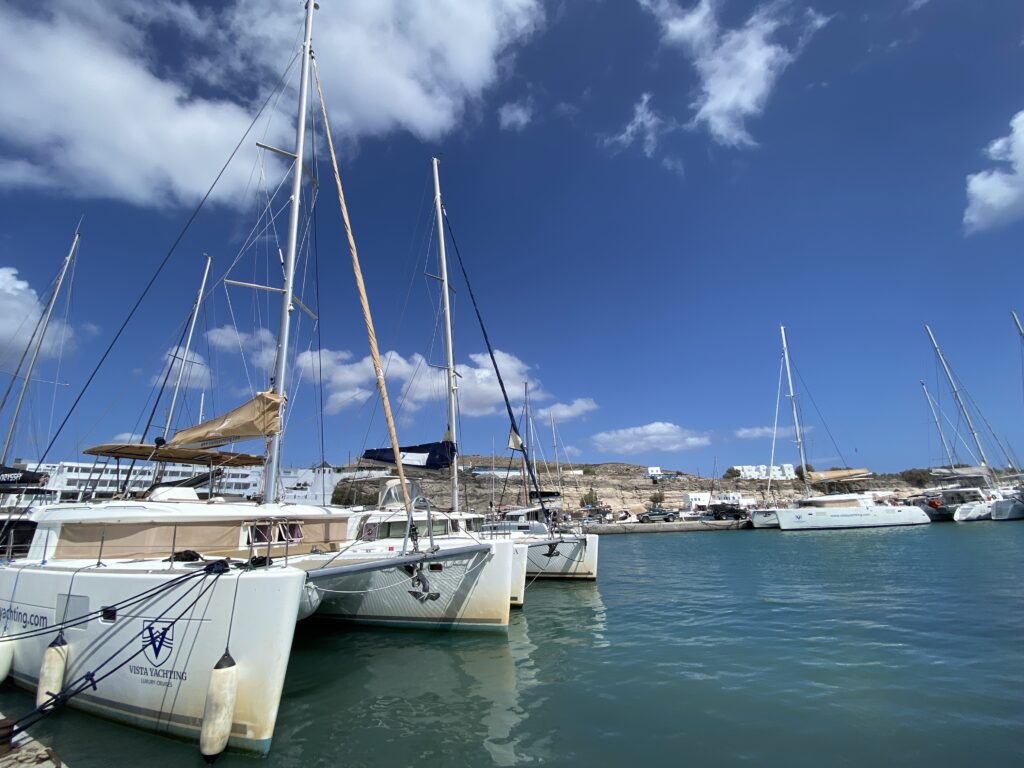
INDEX.
An index of all 210+ previous wine and travel related articles from this Vino Voices blog are available here. By clicking on the ‘Forbes’ tab at the top of any page (or here), you can access an additional 260+ Forbes articles I’ve written on lifestyle, wine, travel, sailing and boating and book reviews.
Thanks again for tuning in!

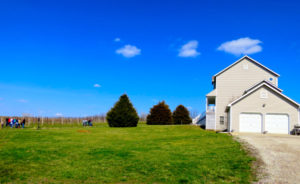


Lynn
7 Oct 2020Nice you’re traveling a bit here and there post lockdown, and perhaps pre- another one. But I don’t want to go there. I’d rather go back to Santorini to explore these wines, the food and hospitality!
Tom M.
9 Oct 2020Santorini was a breath of fresh air for the mind and soul! Beautiful… 🙂 Glad you enjoyed 🌞.